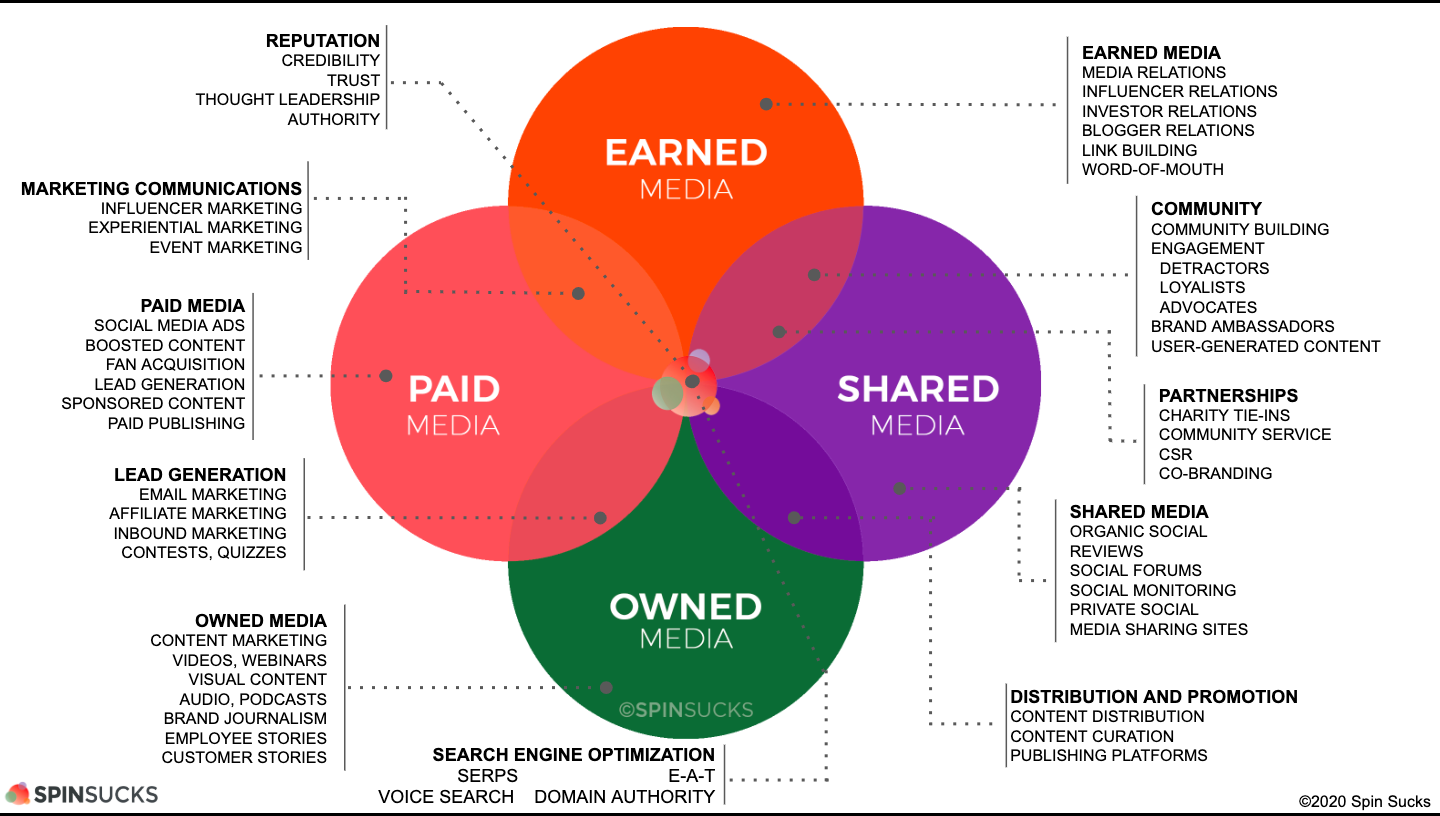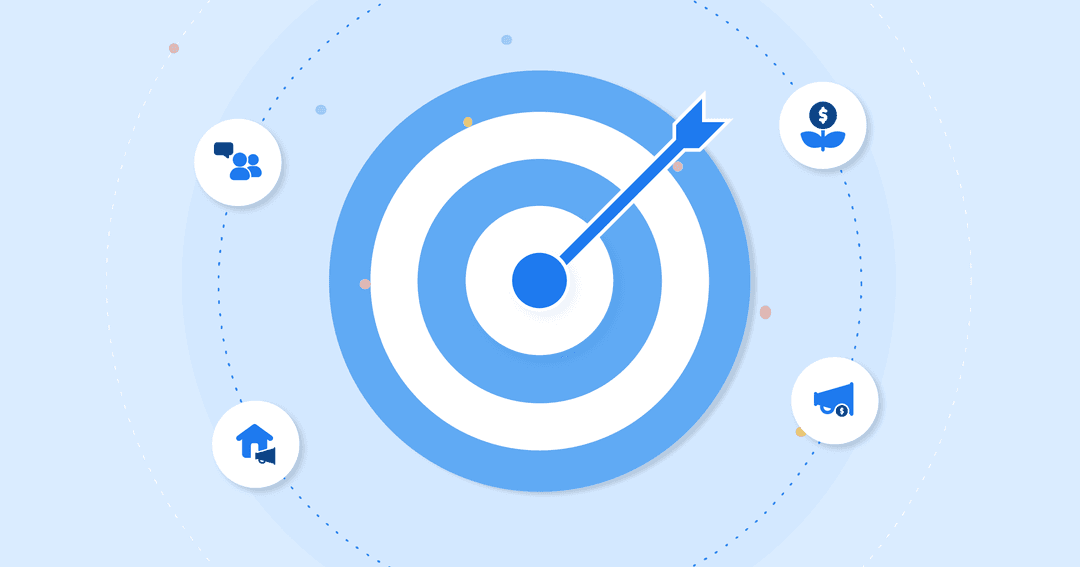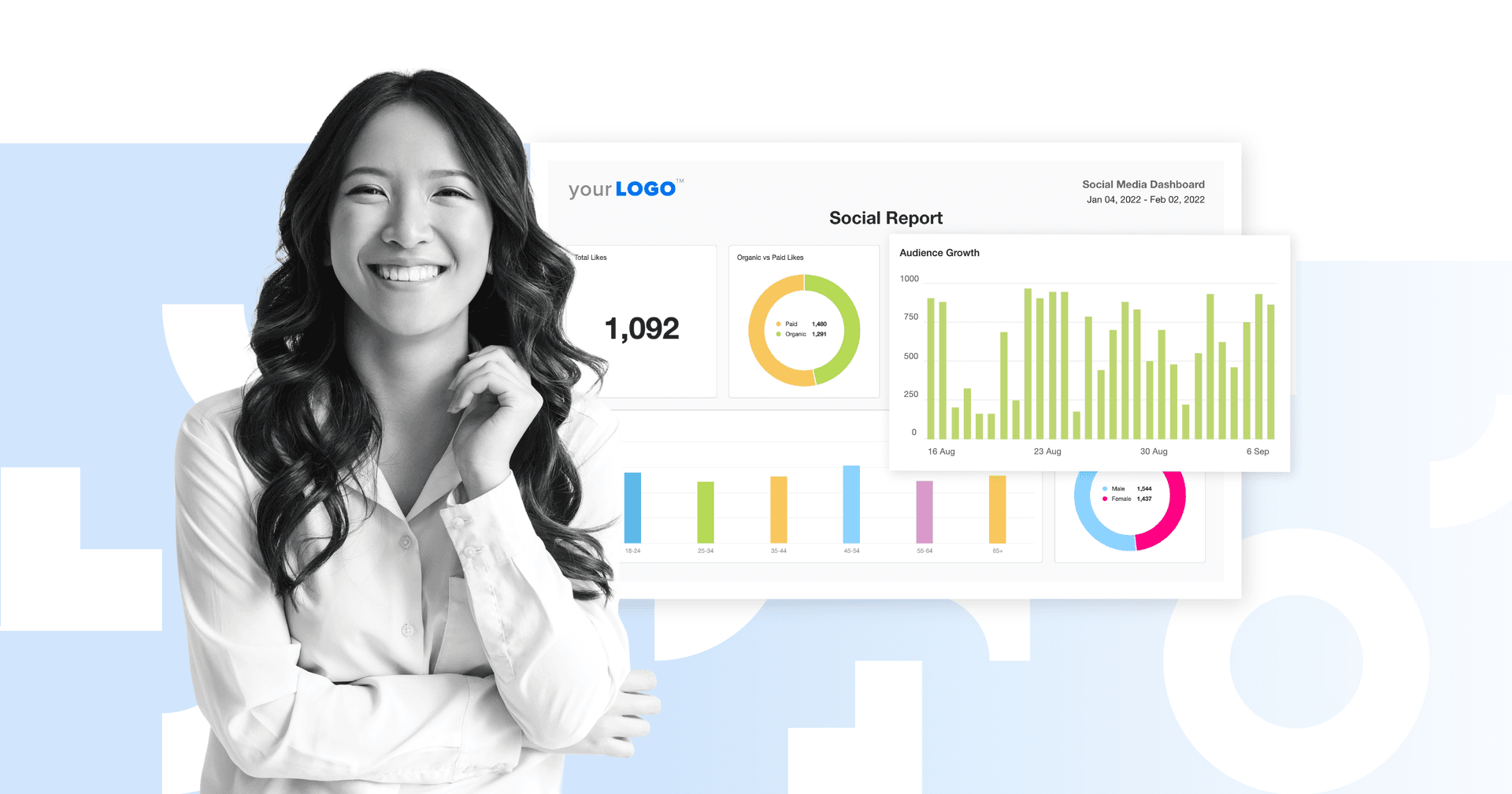Table of Contents
QUICK SUMMARY:
The PESO Model™ is a framework designed by industry expert Gini Dietrich. It integrates Paid, Earned, Shared, and Owned media to create cohesive campaigns. The model enhances strategic decisions, ensures consistency, and improves engagement metrics.
In the modern marketing landscape, there are countless channels and tactics that agencies use to reach their clients’ target audience. The options are endless, from search engine marketing and optimization to social media and content marketing. While there are plenty of choices, it can make things overwhelming and almost paralyzing. Knowing how to do everything well is impossible, so where do you start? What is the most important to use? And how do you measure success?
This is where the PESO Model™ comes in.
Unlocking Success for Marketing Agencies
The PESO Model acts as a guiding framework for marketing agencies, enhancing their capabilities, delivering consistent results, and improving their overall effectiveness in the modern marketing landscape. Here are some ways it benefits agencies:
Understanding and leveraging different media types effectively, ensuring a well-rounded marketing strategy for clients by leveraging paid, earned, shared, and owned media.
Maintaining consistency in your marketing efforts by delivering consistent and measurable results for your clients.
Making strategic decisions about where to focus your efforts for each client. It guides you in determining the most effective media channels to reach the target audience, maximizing the impact of your marketing campaigns.
Accurately measuring the success of your marketing efforts by using specific metrics for each media type. The model allows your agency to track the effectiveness of your campaigns and demonstrate the value you bring to your clients' businesses.
Meeting client expectations more effectively by giving you a well-rounded marketing approach that covers various media channels, increasing your chances of success and improving client satisfaction.
The Advent of the PESO Model
As the founder and CEO of Arment Dietrich and author of Spin Sucks, I have had the tremendous opportunity to share my insights and perspectives on the marketing industry. In addition to this, I also host or co-host several marketing podcasts, where I delve deeper into the nuances of effective marketing.
But perhaps what I'm most well-known for is being the creator of the PESO Model, which is a comprehensive framework for modern marketing that stands for paid, earned, shared, and owned media.
I consider this one of my significant contributions to the field of marketing. So much so that I partnered with Syracuse University to craft a certification for it, further solidifying its credibility and effectiveness in the industry.
When I started my business, much of the work we did was media relations. We were great at our jobs, but it’s impossible to have media reporting on what you’re up to every day. Because of that, there were peaks and valleys in our client work—the peaks when there were a lot of stories due to a product launch, company news, a conference or trade show, or a bit of thought leadership. And the valleys came when there wasn’t much to talk about, or we were preparing for the next thing.
It’s how the industry works, but clients didn’t love paying an agency during the valley time. They wanted results every day, all the time. To boot, measuring the success of media relations efforts to cold, hard cash is extremely challenging. We know it’s one of the best ways to build awareness, trust, and credibility, but being able to directly correlate it to sales? Nearly impossible.
So I started to look at other options. I posed the question first to myself and then to my team, “What can we add to our skillset that will allow us to have consistency in results and measure our effectiveness and prove return on investment as it related to sales?”
It wasn’t an easy undertaking, but it happened at the time that social media was beginning to surface for businesses, WordPress had made it lots easier for the mere mortal to update their website, and content and inbound marketing were trendy.
That question birthed the PESO Model process, first used in my agency and then explained and popularized in Spin Sucks.
What Is the PESO Model?
The PESO Model is divided into four categories: paid, earned, shared, and owned media. Each of these channels has its own unique characteristics and requires a different approach to be effective.

Image Source: Spin Sucks
Paid Media
Paid media refers to any advertising or promotional content that a company pays for, such as boosted content or ads. Paid media can be further divided into two categories: traditional and digital. A traditional paid media campaign includes print ads, television commercials, and radio spots. These channels are typically more expensive and are best suited for clients with larger marketing budgets. However, they can be effective in reaching a broad audience.
Digital paid media includes social media advertising, display ads, and paid search advertising. These channels are typically more cost-effective and offer more precise targeting options. Digital paid media is ideal for clients that want to reach a specific audience and track their results more closely. It also works best for communications teams that don’t have the same budget their marketing brethren do but want to test some boosted, native, and advertorial or sponsored content.
Quickly and easily generate white-label PPC reports using the customizable PPC report template.
Earned Media
Earned media refers to any publicity, public relations, or exposure that a company receives through third-party channels, such as media coverage, influencer promotions, product reviews, and customer testimonials.
Earned media is often seen as the most valuable channel because it is based on the reputation and credibility of the company, but because it relies on external influencers to promote, it’s a lot more challenging to achieve. That said, it can significantly affect a company's brand reputation, social media followers, and visibility. That's why earned media is one of the key performance indicators used by PR professionals.
Incorporate earned media data into a comprehensive client reporting using the Google Sheets integration or custom metrics. Save hours each month by streamlining your reporting with an earned media report template—customizable and ready to impress your clients.
Shared Media
Shared media includes any content that is shared on social media, such as user-generated content, social media posts, and influencer marketing. It allows organizations to reach a broader audience and leverage the power of user-generated content (such as social media influencers) on third-party platforms. Shared media is best suited for clients that have a strong social media presence and actively engage with their followers.
Create social media reports in minutes using a customizable social media report template.
Owned Media
Owned media includes any content that a company creates and controls—and it lives on something they own, such as their website or blog. It is an essential tool used by marketing professionals for building brand awareness and establishing thought leadership while allowing organizations to control their messaging and create content that is tailored to their target audience.
Owned media is best suited for clients that have a strong content marketing strategy and want to establish themselves as industry leaders.
Showcase the results of your agency's owned media strategy with a white labelled SEO report template.
Where To Start?
One of the biggest debates I’ve had with people is about the order of the PESO Model. Almost everyone says, “But I would never start a campaign with paid media.”
I agree!
Nearly every campaign should start with owned media. There are, of course, some exceptions, but most will start there. Owned media sets your foundation. Without it, you don’t have anything to share or promote on shared media, nothing to prove your expertise via earned media, and nothing to amplify through paid media.
When you are creating a brand, the number one rule is to create something memorable, right? As it turns out, naming the process in the order of media type importance didn’t work. No one would remember (or could pronounce) OSEP or OESP. As my publisher and I were going through names, she suggested PESO. Easy to remember and easy to pronounce!
But start where it makes the most sense for your marketing program. If your job is to sell a number of widgets within a certain timeframe, then you might start with paid. Otherwise, your job is to build a credible brand with thought leaders who have the expertise your competitors don’t. In that case, start with owned.
PESO Model Measurement
As we were creating the PESO Model to use with our clients, one of the things that were really important to me was that we were able to measure our effectiveness. And not just the number of stories placed and media impressions but to demonstrate we were affecting sales.
There are several marketing metrics you can use to measure your success within each media type. You can choose which works best for you.
Paid Media
The success of paid media can be measured using metrics such as click-through rates, cost per click, and conversion rates. These metrics help determine the ROI of your advertising efforts and whether they are reaching the intended audience.
Earned Media
The success of earned media can be measured using metrics such as media mentions, website traffic, and social media engagement. These metrics help determine the effectiveness of your media relations efforts and of your brand reputation management.
Shared Media
The success of shared media can be measured using metrics such as social media reach, engagement rates, and influencer metrics. These metrics help determine your social media strategy's effectiveness and your influencer marketing efforts.
Owned Media
The success of owned media can be measured using metrics such as website traffic, bounce rates, and time on site. These metrics help determine the effectiveness of your content marketing strategy and whether your content is resonating with your target audience.
And, of course, use AgencyAnalytics to bring all of your metrics into one spot to create beautiful dashboards that demonstrate the results of your work.
The Takeaway
By using the PESO Model in practice and measuring success, you ensure you reach your client’s target audience effectively and achieve your marketing goals, particularly as they relate to the agency’s goals.

Manage all your clients’ key metrics from 80+ marketing platforms in one place. Easily communicate your agency’s success with intuitive live dashboards and reports made in minutes. Try AgencyAnalytics free for 14 days.

Written by
Gini Dietrich is the founder and CEO of Arment Dietrich, author of Spin Sucks (the book and the blog), and host of the Spin Sucks podcast. She is the creator of the PESO Model™ and has crafted a certification for it in partnership with Syracuse University. She is the co-author of Marketing in the Round, co-host of Inside PR, and co-host of The Agency Leadership podcast.
See how 7,000+ marketing agencies help clients win
Free 14-day trial. No credit card required.






